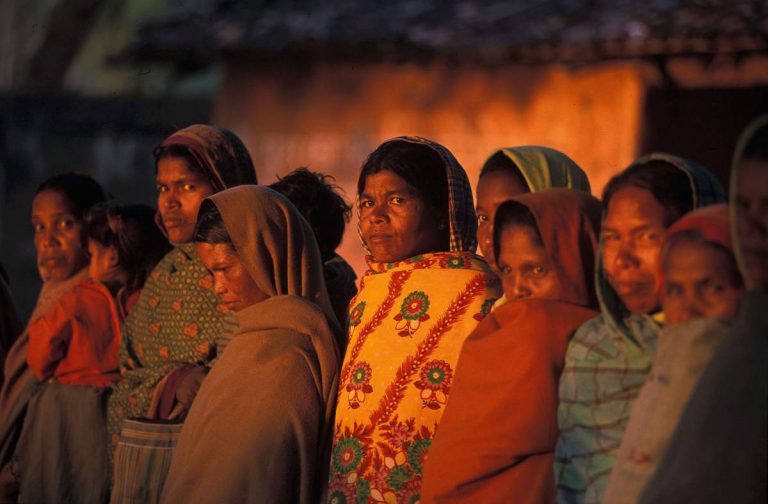Challenges of Disaster Management: A Perspective from Bengal
Prachi Shukla holds an M.Sc. in Geography from the University of Calcutta. Her research interests include agriculture, environment, economic and political geography.
I was watching T.V. news where a man was telling the reporter that he and other villagers had taken shelter in a nearby hotel to save themselves from the cyclone. While most of the village houses were either completely destroyed or went under water, even the hotels suffered great damages- such was the severity of the cyclone. ‘Yaas’ hit the southern coastal districts of West Bengal including Medinipur and South-24 Parganas on 26 May 2021. Many people were rescued by the relief team, some were still stranded and some went to the nearest pucca buildings for protection. They will have to stay there for a couple of days till the water recedes from their homes and farmlands.
However, everything would have changed. The waves have already flooded everything they can see now. But whether their homes are safe or not is not known. If there is nothing left which can be called a shelter, then they will start once again and build their habitations step by step. The farms are submerged and crops lost, fishing boats wrecked and livestock dead. The books of young students are missing and so many of them may drop out of school very soon. The cultivators have to think how the second produce can compensate for the tumult in the family’s economics. There will be a number of people among them who will migrate to safer places where they might find jobs and some kind of shelter, away from this place, where cyclones and agrarian losses would not be experienced.
But the majority would stay and rather would have to stay here only, in their own land. This may not be the first time that the winds have blown this fast towards their village. Cyclones and floods have become a common feature in coastal West Bengal. Embankments are broken ruthlessly every other year and agricultural lands are rendered infertile by the saline water. Times are tough and nature is striking again and again to add to the woes. Life is already under debt and rehabilitation or compensation after a calamity like this has political barriers. Economic sorrow is permanent and debilitating.
Notwithstanding all these threats, climate hazards are becoming a rule of life in the coast here. Year after year, more severe cyclones approach their villages or neighbouring regions about which they are now able to know conveniently. Yes, previously the villagers could not get help this quick, warnings could not be issued at the earliest and hundreds of lives which were lost are not lost now. There are more weather stations, modern radars in use and extra personnel on rescue operations. Still, lives are increasingly insecure here. People cannot say they are moving towards development. Whatever little can be grown or developed this season may vanish in the next season. The scenery is changing near the coast. Their village is transforming but they are unsure whether this transformation is helping them or making them worse.
The hotel is strong, resilient and modern. The houses of all of these people on T.V. are delicate, vulnerable and primitive. Thus, the villagers rushing to the hotel is a basic intellectual action. But it raises a number of questions.
The rural folk flocked to the hotel to protect themselves. But within the same area, why are they not safe inside their homes and why are they ‘rescued’ only in hotels? Because instead of strengthening the existing cultural landscape, there have been created new separate landscapes within the same ecosystem. Most of the time, such growth lacks the necessary sensibility which is required on the part of the visitors and facilitators of tourism in these eco-sensitive areas.
Development of these new separate spaces is obviously meant for a different group of people who can afford to occupy them for the small time they come here and enjoy the beauty of nature. They unknowingly cause more harm than just taking away some indigenous handicrafts, clicking photos and spending leisurely times by the sea.
It can be said evidently that rescue and relief operations have been improved over the years. But it is also a sad truth that rescue and relief is not just what is needed. Long-term solutions for making rural habitations cyclone-resilient have not been implemented at large. All the modern measures are known but till now embankments could not be turned into cyclone-proof structures. As a result, water gushes into the low-lying villages. Developmental activities along the coast are turning against local ecology. Unplanned growth of tourist places, indiscriminate removal of vegetation, coastal pollution are ever increasing events seen almost everywhere. Concerns for global warming and climate change are not converted into effective enforcement measures.
It is a great irony that in this case the people who live close to nature, who try to maintain a balance between the physical world and the human world as their lives are largely dependent on nature, are the most affected by nature’s anger. Instead of empowering them to adapt better to their environment by providing necessary infrastructure, there is such transformation encouraged in their surroundings that their lives become worse off. This climatic injustice is sadly the result of a system orchestrated by human society itself upon itself- people suffering cyclonic wrath because of this system which is fed by social, political, economic inequalities.
The newspaper reads that higher sea surface temperatures are leading to increased frequency of cyclones. According to a study by Roxy,et.al. (2020), the surface temperature of the tropical Indian Ocean rose by 1°C over the period 1951-2015 which is much higher than the global average of 0.7°C and 90% of this rise is due to anthropogenic emissions. This also affects marine life adversely by modifying ocean environments , again having indirect impacts on human society. A single country cannot be held responsible for this phenomenon.
Climate change is a global issue which calls for international cooperation and integrated action. The difference in the carbon footprint of the developed and developing world will have to be acknowledged. Countries should invest more in renewable energy and implement the guidelines of climate treaties and protocols. Carbon trading should be taken up.
Though higher temperatures cannot be controlled by a single region alone, the effects from any calamity can be controlled to significant extent by local initiatives. Efforts should be made to restrict changes in land use along riparian and coastal areas. Necessary structural and non-structural measures (for example, building stronger embankments and promoting afforestation, respectively) must be taken up by local administration. Clear mapping of the hazard prone areas should be done as a first step. Carefully designed and detailed plans should be prepared. The CRZ rules should be followed strictly and construction near the coast should be prohibited. Villagers should be provided aid to make permanent dwellings. Drainage system of the coastal areas should be improved to provide sufficient channels for draining out storm water. Ecological and ethical tourism should be encouraged.
Finally, it is not just at the state or international scale that initiatives would accrue to the needs of these poor villagers. Small steps by all individuals shall have great cumulative benefits. We all can and must contribute by reducing wastage of resources, adopting green practices, being sensible to the environment and giving out a hand to vulnerable communities. Various civil society groups, citizens’ bodies, environmental activists, academicians are working towards making the coastal communities self-reliant in different ways. We have to ensure that everyone gets ecological justice and none is forced to become a climate refugee. We do not want the villagers to be sheltered in the hotel after losing their own shelter.
References
1. Roxy M.K. et al. (2020). Indian Ocean Warming. In: Krishnan R., Sanjay J., Gnanaseelan C., Mujumdar M., Kulkarni A., Chakraborty S. (eds) Assessment of Climate Change over the Indian Region. Springer, Singapore, Retrieved May 31, 2021, from https://link.springer.com/chapter/10.1007/978-981-15-4327-2_10
IMAGE SOURCE: Reuters








